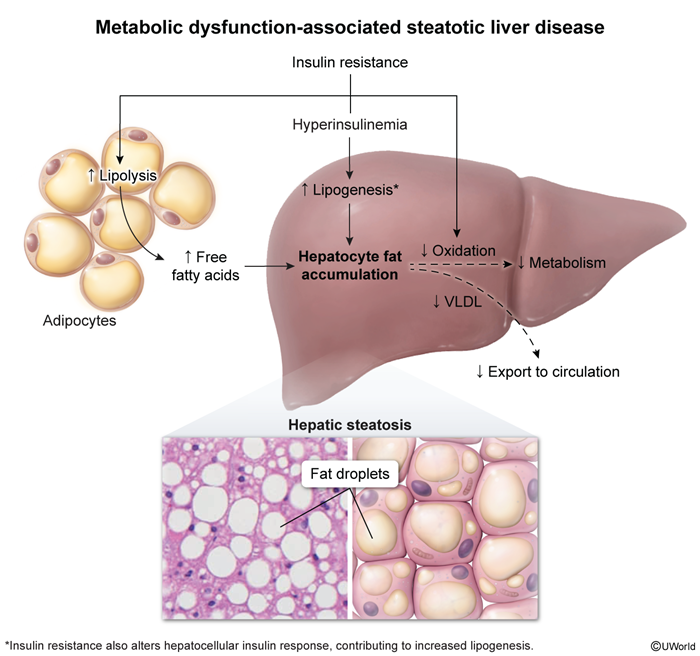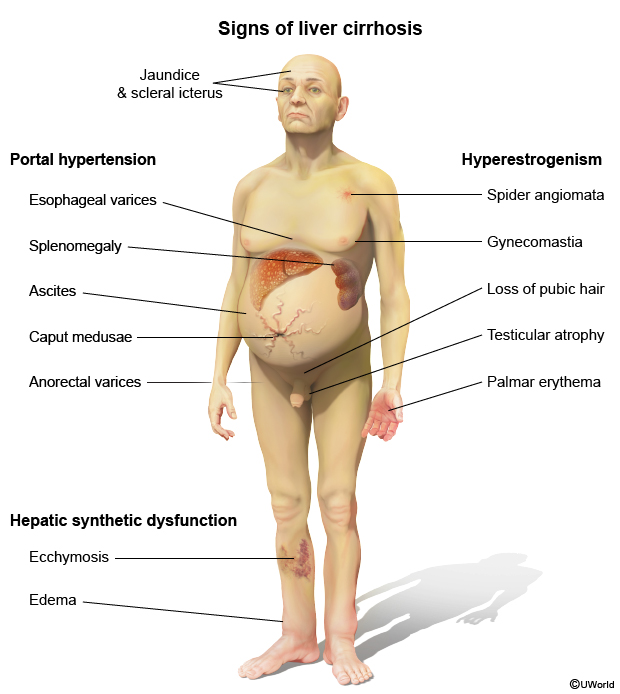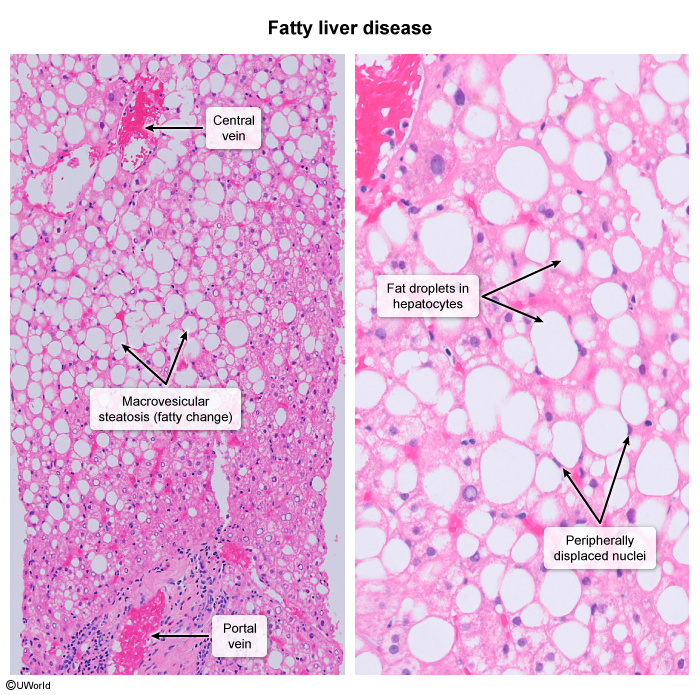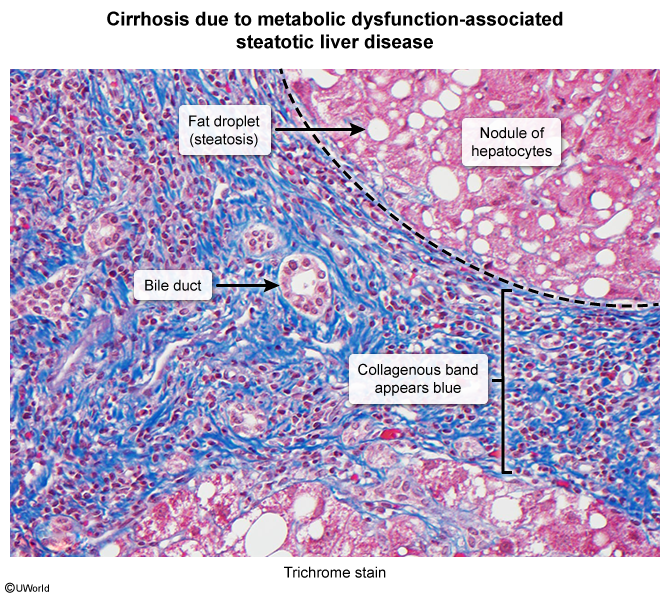Metabolic Dysfunction-Associated Steatotic Liver Disease (MASLD) (Formerly NAFLD)
Article Sections
Introduction
Metabolic dysfunction–associated steatotic liver disease (MASLD), formerly known as nonalcoholic fatty liver disease (NAFLD), is a spectrum of conditions involving excessive hepatic fat accumulation in the absence of secondary causes (eg, significant alcohol consumption). MASLD accompanies metabolic syndrome (eg, hyperglycemia, obesity, hypertension) and has emerged as the most common cause of chronic liver disease in regions with a high prevalence of these risk factors. The spectrum of MASLD includes progression from steatosis (ie, fatty infiltration without significant injury) to steatohepatitis (ie, inflammation with hepatocyte injury) and eventually fibrosis with the potential for cirrhosis.
Epidemiology and risk factors
MASLD affects approximately 30% of adults worldwide, paralleling the rise in obesity and diabetes mellitus. Although the condition can develop in normal-weight individuals, central adiposity and other components of
Continue Learning with UWorld
Get the full Metabolic Dysfunction-Associated Steatotic Liver Disease (MASLD) (Formerly NAFLD) article plus rich visuals, real-world cases, and in-depth insights from medical experts, all available through the UWorld Medical Library.
Figures


Images

